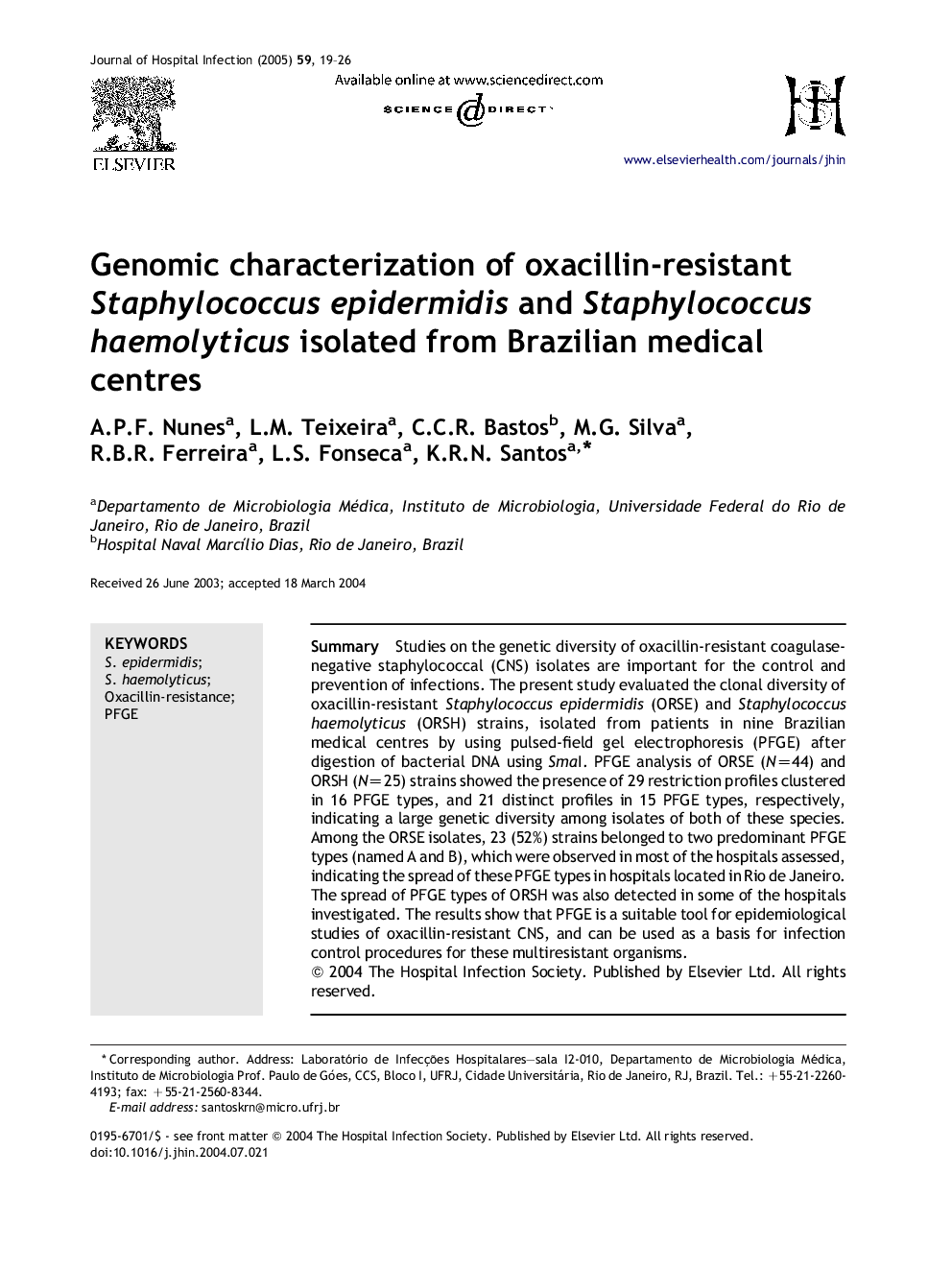| Article ID | Journal | Published Year | Pages | File Type |
|---|---|---|---|---|
| 9269320 | Journal of Hospital Infection | 2005 | 8 Pages |
Abstract
Studies on the genetic diversity of oxacillin-resistant coagulase-negative staphylococcal (CNS) isolates are important for the control and prevention of infections. The present study evaluated the clonal diversity of oxacillin-resistant Staphylococcus epidermidis (ORSE) and Staphylococcus haemolyticus (ORSH) strains, isolated from patients in nine Brazilian medical centres by using pulsed-field gel electrophoresis (PFGE) after digestion of bacterial DNA using SmaI. PFGE analysis of ORSE (N=44) and ORSH (N=25) strains showed the presence of 29 restriction profiles clustered in 16 PFGE types, and 21 distinct profiles in 15 PFGE types, respectively, indicating a large genetic diversity among isolates of both of these species. Among the ORSE isolates, 23 (52%) strains belonged to two predominant PFGE types (named A and B), which were observed in most of the hospitals assessed, indicating the spread of these PFGE types in hospitals located in Rio de Janeiro. The spread of PFGE types of ORSH was also detected in some of the hospitals investigated. The results show that PFGE is a suitable tool for epidemiological studies of oxacillin-resistant CNS, and can be used as a basis for infection control procedures for these multiresistant organisms.
Keywords
Related Topics
Life Sciences
Immunology and Microbiology
Applied Microbiology and Biotechnology
Authors
A.P.F. Nunes, L.M. Teixeira, C.C.R. Bastos, M.G. Silva, R.B.R. Ferreira, L.S. Fonseca, K.R.N. Santos,
